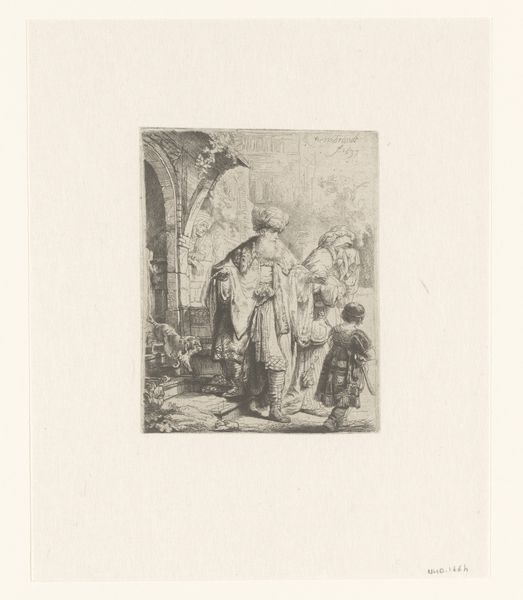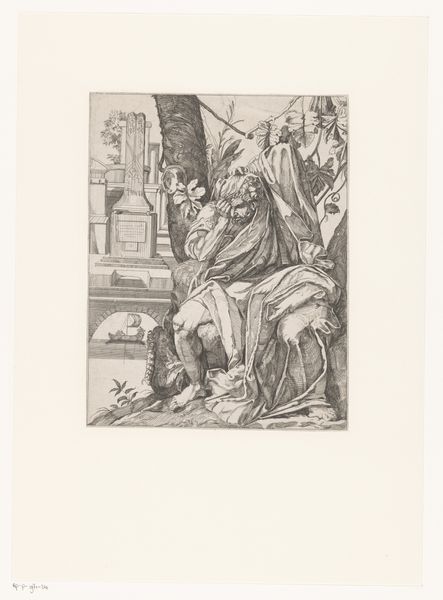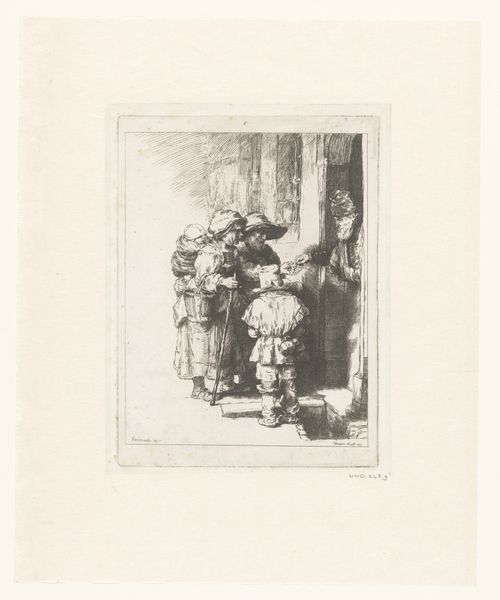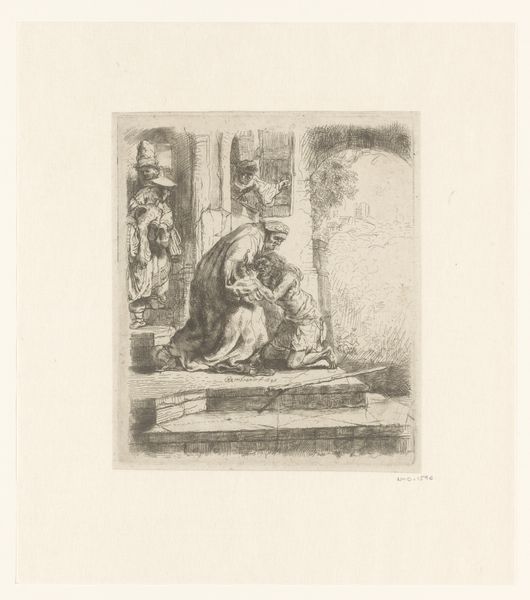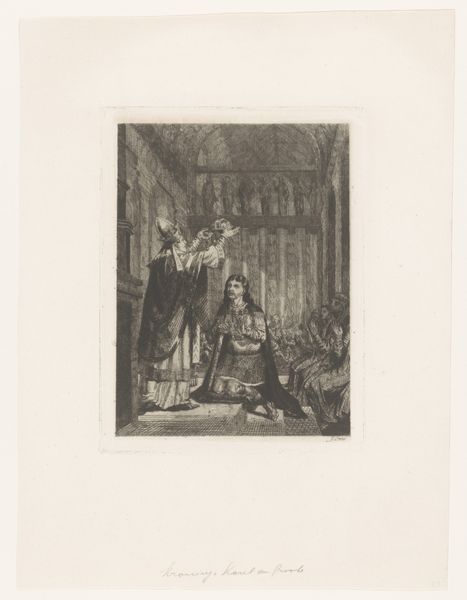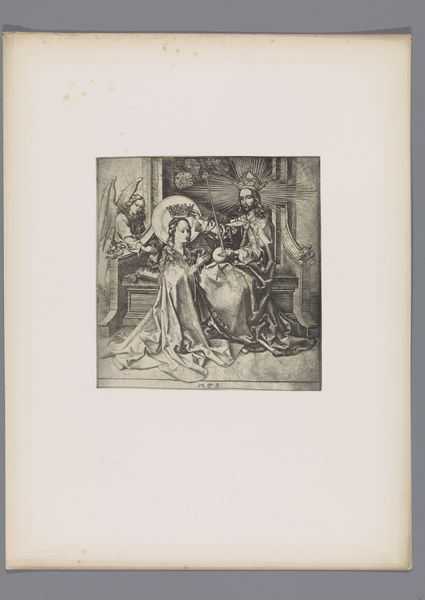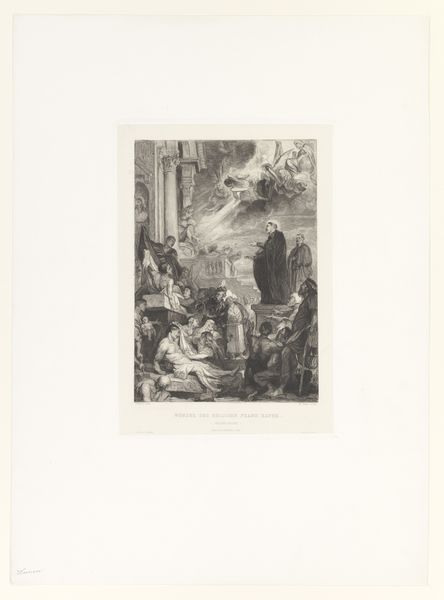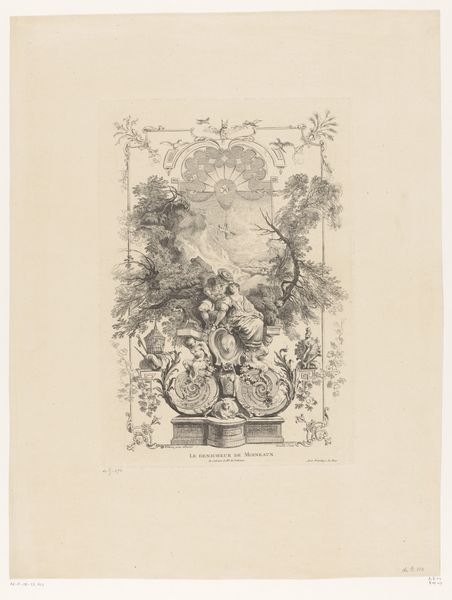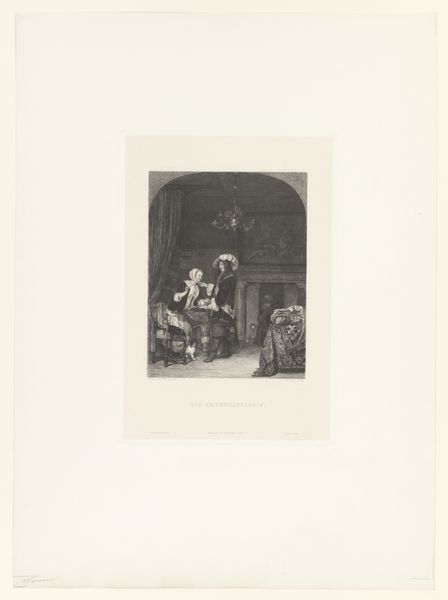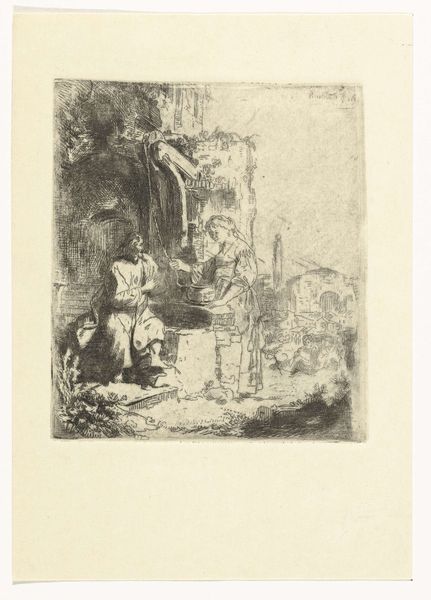
print, etching, paper, ink
#
portrait
#
narrative-art
#
baroque
#
ink paper printed
# print
#
etching
#
figuration
#
paper
#
ink
#
line
#
history-painting
Dimensions: height 158 mm, width 127 mm
Copyright: Rijks Museum: Open Domain
Editor: Here we have an etching titled "The Return of the Prodigal Son," likely created between 1711 and 1800 by an anonymous artist. It’s ink on paper, currently held at the Rijksmuseum. The scene feels incredibly intimate, despite the number of figures. How do you interpret this work? Curator: Formally, the composition employs a stark contrast between the illuminated figures of the father and son and the surrounding darkness. Notice the artist's use of line. How would you describe the quality of the line? Editor: It's very fine, intricate almost. Lots of hatching, creating shadow. Curator: Precisely. The artist uses this hatching to build volume and texture, drawing the viewer's eye towards the emotional crux of the scene: the embrace. The linearity, combined with the print medium, emphasizes a graphic quality that heightens the narrative's drama. Does the architectural backdrop strike you in any way? Editor: It's crumbling, almost fragmented, which creates a sense of decay but maybe also suggests a fresh start? Curator: Interesting. Consider this fragmentation as not just a narrative device, but a formal one as well. The broken architecture mirrors the fractured relationship being mended. Ultimately, the effectiveness resides in how the artist merges formal elements to enhance emotional expression. Editor: That’s fascinating; I never considered how the broken architecture visually reinforced the themes of the story itself. I am curious how the line work emphasizes light within the scene. Thank you. Curator: My pleasure.
Comments
No comments
Be the first to comment and join the conversation on the ultimate creative platform.
